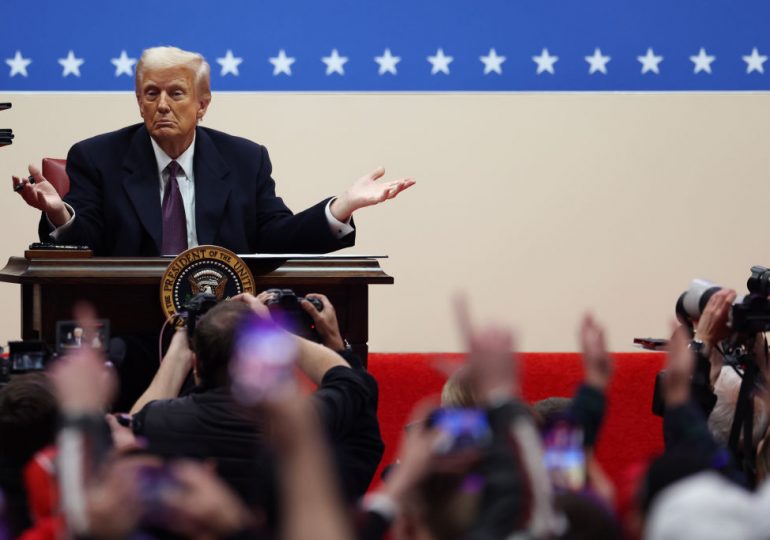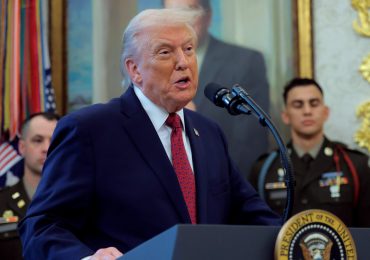It didn’t take President Donald Trump long to take his first shots at U.S. efforts to tackle climate change. In a series of executive orders issued just after taking office on Monday, he began the process of pulling out of the Paris Agreement, promised to speed fossil fuel project approvals, and declared an energy emergency. All of these efforts were designed to stimulate the U.S. fossil fuel industry and “drill baby, drill.”
[time-brightcove not-tgx=”true”]
“We will be a rich nation again,” he said in his inaugural address. “And it is that liquid gold under our feet that will help to do it.”
If only switching up the energy system were that simple. Trump’s bid to stoke U.S. fossil production and unleash American “energy dominance”—his frequent phrasing, not mine—meets a difficult reality: the presidential pen has only so much sway over the supply and demand factors that dictate energy markets. In some cases, his actions will serve as a catalyst to market trends already underway; in others, they will meet unyielding market conditions.
That doesn’t mean that Trump’s actions don’t matter. Signaling from the White House figures into markets, but they serve as just one input among many.
“The decisions that U.S. companies make about how much to grow oil production are first and foremost going to be determined by market signals,” says Jason Bordoff, who runs the Center on Global Energy Policy at Columbia University.
Perhaps no part of the energy sector better illustrates this dynamic than oil. The commodity is produced and sold on the global market, and the industry responds to international trends more so than bite size domestic policy moves. It’s fair to say that the Biden Administration wasn’t the oil industry’s biggest advocate. Nonetheless, the U.S. broke oil production records during the Biden presidency as the Russian invasion of Ukraine disrupted trade flows.
Ultimately, the primary factors that determine industry moves are the price of oil and the profitability of production. Two-thirds of oil and gas executives surveyed by the Dallas Fed in December said they expected permitting times for drilling to decrease over the next four years—a development that addresses some of their most vocal complaints about the Biden Administration. But even as they get what they want, a similar share of those executives said they had no plans to increase their investments in 2025 beyond their plans prior to election.
The biggest lever to stimulate oil production—or curtail it—is price. In general, high oil prices push oil companies to produce more; low oil prices lead them to pull back. But in recent years oil companies have resisted the temptation to significantly invest in expanding drilling when prices rise, embracing instead the ability to sell their oil for the high price. Trump has limited power to affect the price of oil. And, even where he does, he faces a complicated dynamic. Higher prices may lead to more production, which he wants, but they also upset consumers who will be forced to pay more at the pump.
And then there’s the long-term trend driven by the energy transition. While models suggest a range of potential scenarios for oil demand going forward, there is wide agreement that not all oil reserves can be exploited profitably. So instead of drilling wherever they can, many oil companies have focused on extracting every dollar from existing wells. Indeed, opening up more land to oil drilling won’t matter much if companies don’t want to drill. Congressionally mandated auctions for the right to drill on federal land drew minimal interest during the Biden Administration.
Meanwhile, renewable energy remains the lowest cost source of electricity in many places. And advances in a range of other clean technologies—from electric vehicles to battery storage—increasingly make them an easy choice. “We didn’t go back to horses, even though there was a strong horse lobby when cars came,” says Leah Seligmann, chief change catalyst and CEO at The B Team, a business group focused on climate.
Other trends cut in Trump’s favor. The U.S. electricity grid is under pressure as power demand rises, in large part due to the rapid construction of data centers for AI. Much of that demand will be met with clean energy—in part because it’s cheaper and in part because tech companies investing in AI are willing to spend big to meet their net-zero emissions commitments. But that pressure has also led to plans to greatly expand U.S. natural gas infrastructure. U.S. electric utilities have 17.5 GW of new natural gas capacity planned, equivalent to more than eight Hoover Dams, according to data from Rystad Energy, an energy research firm. Trump can help smooth the path for that infrastructure, particularly by easing permitting, but he isn’t driving the trend.
Trump’s powerlessness to stop market trends does not mean that his climate actions should be ignored. For those in the oil and gas industry, the executive orders and reorientation of the U.S. on climate may mean less red tape, and somewhat higher profit margins. Many are also celebrating because Trump champions rather than demonizes their industry.
And, even if Trump can’t stop the energy transition, his push will have some harmful climate effects. His presidency will certainly stall many Biden-enacted climate initiatives that were due to deliver in the coming months and years. An uncertain future hangs over many of the climate programs created by the Inflation Reduction Act, for example. On the margins, having a friendly government with a finger on the scale in favor of fossil fuels will certainly help the oil and gas industry as the federal government makes decisions on policies related to trade and permitting, among other things.
Most obviously, his executive orders—including and especially his decision to withdraw from the Paris Agreement—signal that the U.S. is no longer an authority on climate on the global stage. But Trump’s executive orders didn’t make that a reality, his election did.
Leave a comment







